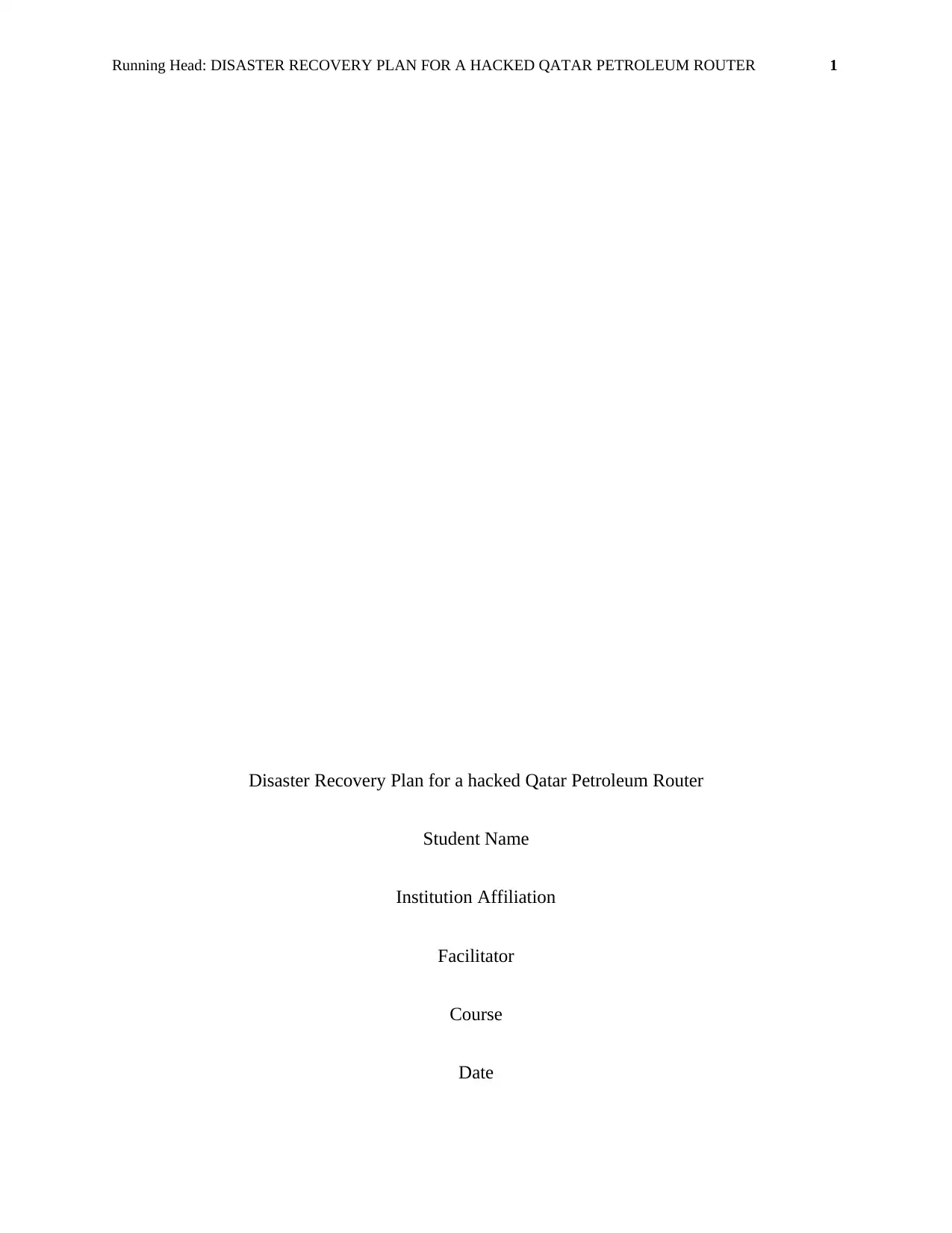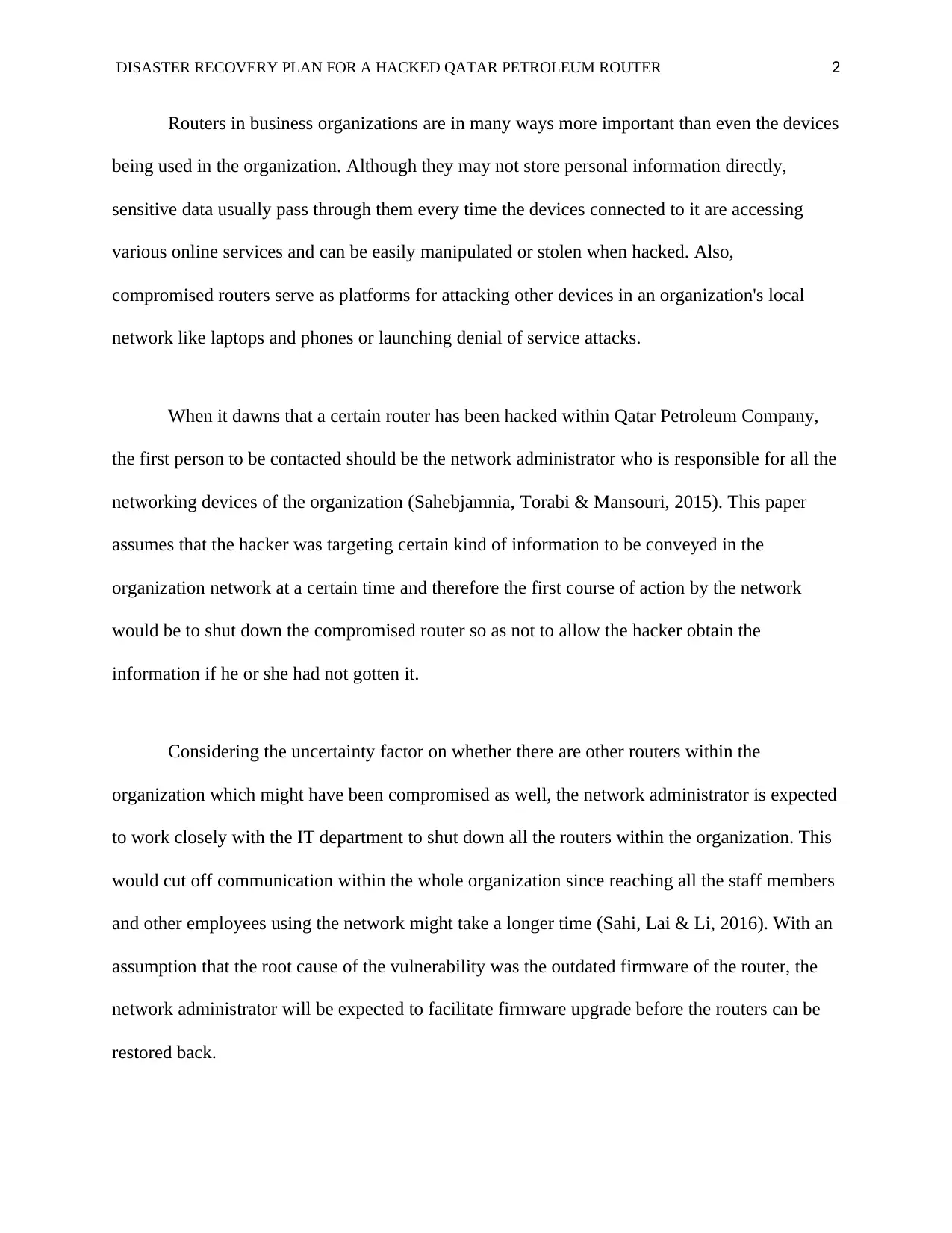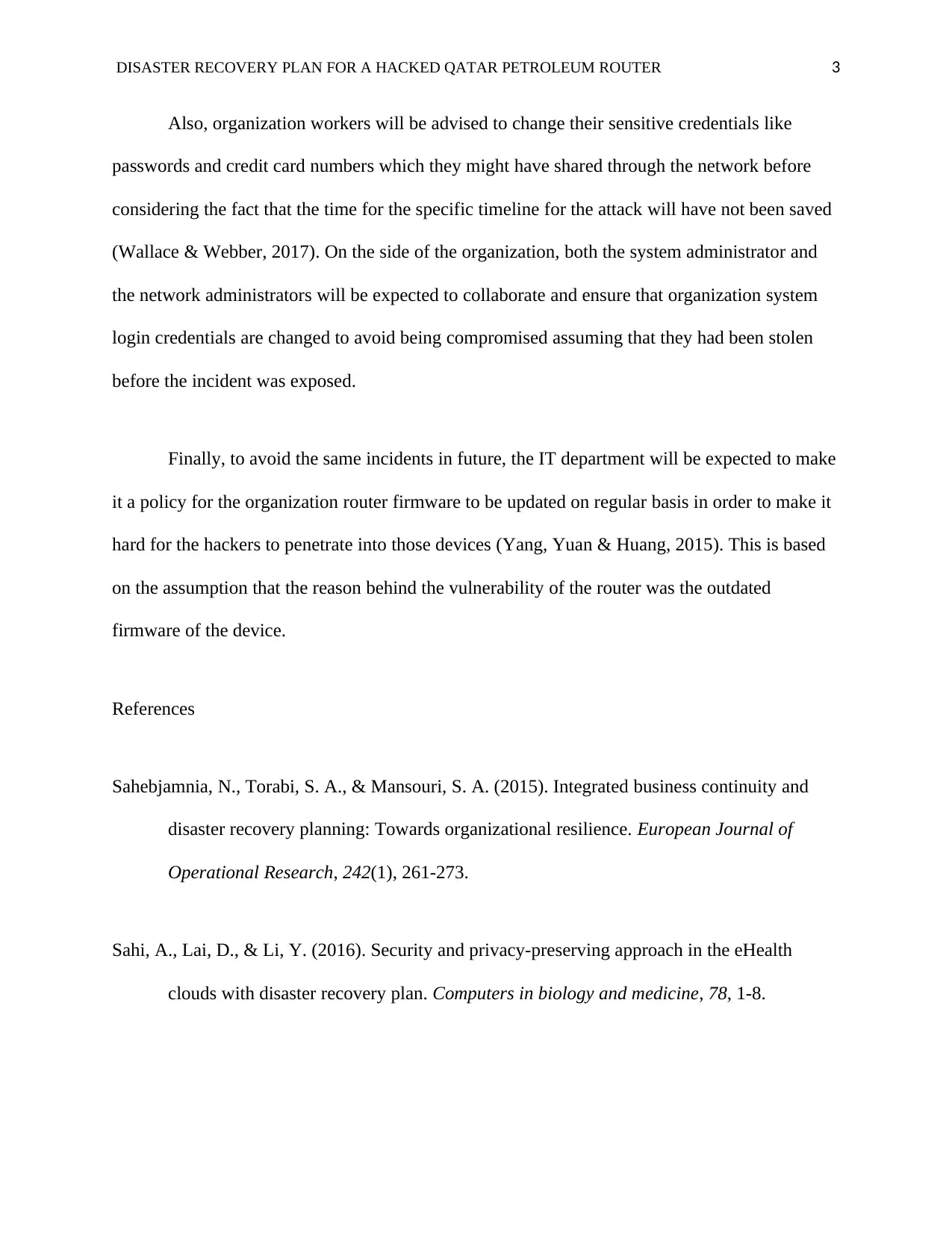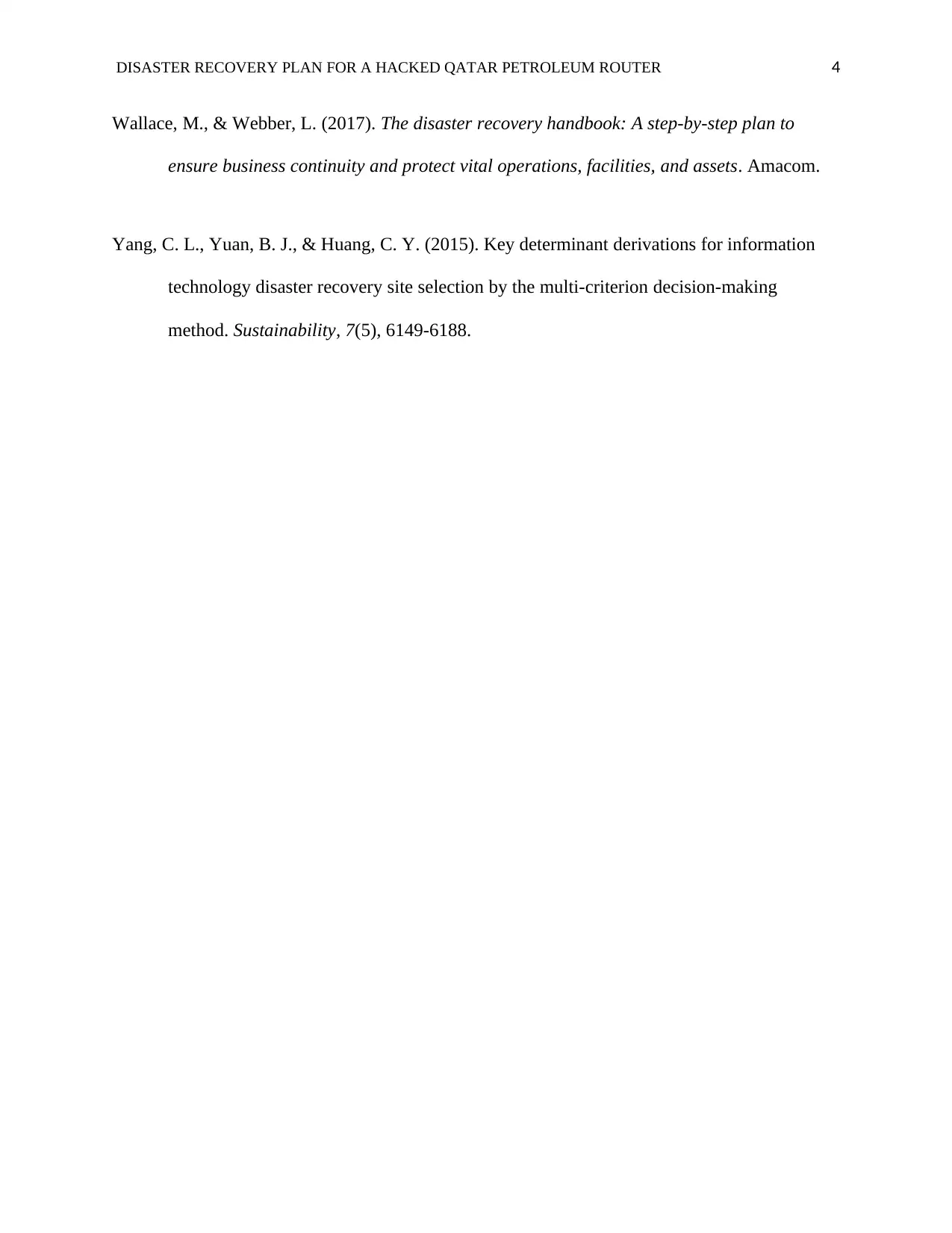Analysis of Disaster Recovery Plan for Qatar Petroleum Router Hack
VerifiedAdded on 2021/10/16
|4
|689
|271
Report
AI Summary
This report details a disaster recovery plan for a hacked router within Qatar Petroleum. The plan emphasizes immediate actions, such as shutting down the compromised router and potentially all organization routers to prevent further data breaches. The network administrator and IT department are central to this response, focusing on identifying the root cause of the vulnerability, which is assumed to be outdated firmware. The plan includes upgrading firmware, advising employees to change sensitive credentials, and changing system login credentials. Furthermore, the report highlights the importance of updating router firmware regularly to prevent future attacks. The references provided support the importance of integrated business continuity, security, and disaster recovery planning in the face of cyber threats.
1 out of 4





![[object Object]](/_next/static/media/star-bottom.7253800d.svg)